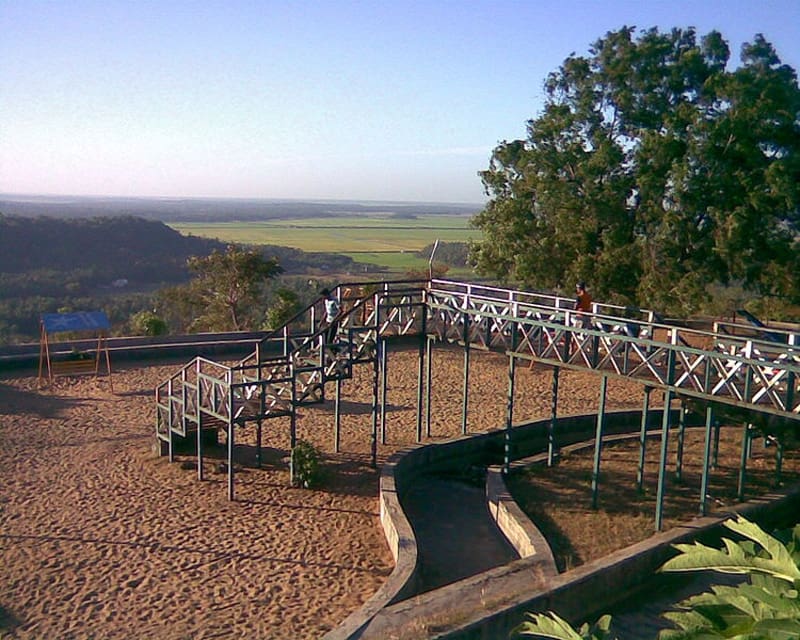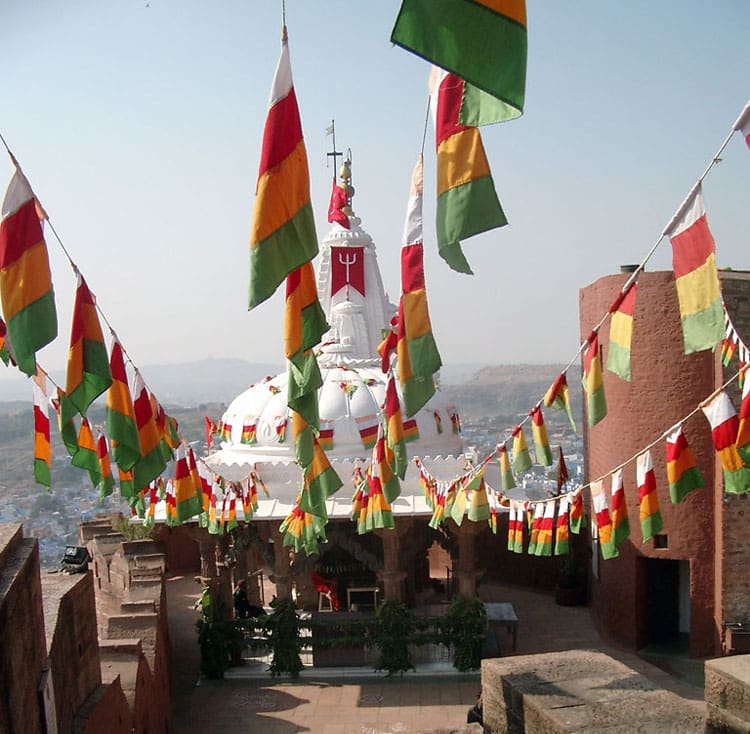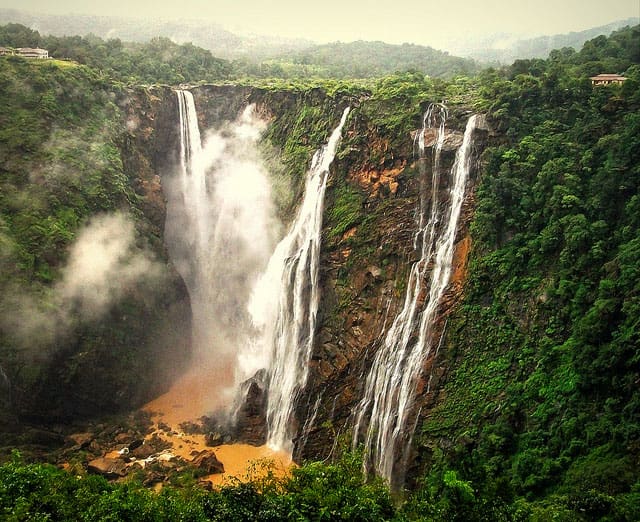Harike Wetland and Bird Sanctuary, nestled in the Indian state of Punjab, is a natural haven that boasts a diverse ecosystem. Spread across the confluence of the Beas and Sutlej rivers, this sanctuary is a paradise for birdwatchers and nature enthusiasts alike. Let’s delve deeper into what makes this sanctuary a must-visit destination.
Location and Size
Situated near the town of Harike, in the Tarn Taran district of Punjab, Harike Wetland and Bird Sanctuary covers an expansive area of approximately 86 square kilometers. Its strategic location at the meeting point of two major rivers contributes to its rich biodiversity.
Ecological Significance
The sanctuary is renowned for its role in conserving various species of flora and fauna. It serves as a vital habitat for migratory birds, providing them with a safe haven during their annual journey. Additionally, the wetlands play a crucial role in maintaining the ecological balance of the region.
Conservation Efforts
Over the years, concerted efforts have been made to preserve and protect the sanctuary’s fragile ecosystem. Various conservation initiatives, coupled with community involvement, have helped in safeguarding the diverse wildlife and vegetation found here.
Places To Visit
Bird Watching Spots
Harike Wetland is home to over 350 species of birds, making it a haven for birdwatchers. Visitors can explore designated watchtowers and observation points strategically located across the sanctuary to catch glimpses of both resident and migratory birds.
Boating Expeditions
Exploring the sanctuary by boat offers visitors a unique perspective of its sprawling wetlands and abundant birdlife. Boating expeditions are a popular activity, allowing tourists to navigate through the serene waters while enjoying the picturesque surroundings.
Nature Trails
Traversing the sanctuary’s well-marked nature trails provides an opportunity to immerse oneself in the tranquility of nature. These trails wind through diverse habitats, allowing visitors to observe various plant species and spot wildlife along the way.
Things to Do
Bird Photography
With its diverse avian population, Harike Wetland presents endless opportunities for bird photography enthusiasts. Capture stunning shots of both native and migratory birds against the backdrop of the sanctuary’s scenic landscapes.
Wildlife Spotting
Apart from birds, the sanctuary is also home to several other wildlife species, including amphibians, reptiles, and mammals. Keep an eye out for sightings of deer, jackals, turtles, and even rare species such as the smooth-coated otter.
Picnicking and Relaxation
Enjoy a leisurely picnic amidst the tranquil surroundings of Harike Wetland. Several designated picnic spots within the sanctuary offer the perfect setting for a day out with family and friends. Unwind amidst nature and soak in the peaceful ambiance.
Climatic Conditions
Weather
Harike Wetland experiences a typical North Indian climate, characterized by hot summers and cold winters. The best time to visit is during the winter months, from November to February, when the weather is pleasant, and migratory birds flock to the sanctuary.
Monsoon
The monsoon season, from July to September, brings heavy rainfall to the region, leading to a rise in water levels within the sanctuary. While the lush greenery during this time is a sight to behold, it is advisable to check weather forecasts and plan accordingly.
Summer
Summers in Harike can be quite harsh, with temperatures soaring above 40 degrees Celsius. It is not an ideal time to visit due to the scorching heat, but early mornings and late evenings offer some respite for those keen on exploring the sanctuary.
Best Time to Visit
Winter Season
The winter months, from November to February, are considered the best time to visit Harike Wetland and Bird Sanctuary. The pleasant weather during this period, coupled with the influx of migratory birds, makes it an ideal time for birdwatching and outdoor activities.
Bird Migration Season
The peak bird migration season, usually from December to January, offers a unique opportunity to witness thousands of avian visitors from distant lands. Birdwatchers flock to the sanctuary during this time to witness the spectacular sight of birds in flight.
Early Morning Visits
For avid birdwatchers and photographers, early morning visits to the sanctuary are highly recommended. The calm and peaceful atmosphere, coupled with favorable lighting conditions, enhance the overall experience of exploring the sanctuary’s natural beauty.
How to Reach
By Air
The nearest airport to Harike Wetland is Sri Guru Ram Dass Jee International Airport in Amritsar, approximately 75 kilometers away. From the airport, visitors can hire taxis or opt for bus services to reach the sanctuary.
By Rail
The nearest railway station is located in Tarn Taran, around 30 kilometers from Harike. From Tarn Taran, visitors can avail themselves of local transportation options such as buses or taxis to reach the sanctuary.
By Road
Harike Wetland is well-connected by road, with regular bus services available from nearby cities such as Amritsar, Ludhiana, and Chandigarh. Visitors can also opt for self-drive or hire taxis to reach the sanctuary via the well-maintained road network.
History
Historical Significance
Harike Wetland holds significant historical importance, dating back to ancient times. It is believed that the area was frequented by Sikh Gurus during their travels and served as a place of contemplation and spiritual solace.
British Era
During the British colonial period, Harike Wetland gained prominence as a favored hunting ground for British officials and aristocrats. The abundant wildlife and picturesque landscapes attracted hunters from far and wide.
Conservation Efforts
In the post-independence era, efforts were initiated to conserve and protect the sanctuary’s natural heritage. The Punjab government declared Harike Wetland a protected area in 1953, laying the foundation for its conservation and eco-tourism development.
Food
Local Cuisine
Visitors to Harike Wetland can savor the flavors of authentic Punjabi cuisine at nearby eateries and dhabas (roadside restaurants). Indulge in mouthwatering delicacies such as sarson da saag (mustard greens) with makki di roti (cornbread) and butter chicken.
Street Food
Exploring the bustling streets surrounding the sanctuary offers a chance to sample an array of street food delights. From spicy chaat to crispy pakoras, there’s something to tantalize every taste bud.
Picnic Provisions
For those planning a picnic at the sanctuary, it is advisable to carry along a picnic basket filled with snacks and refreshments. Pack some sandwiches, fruits, and beverages to enjoy amidst the scenic beauty of Harike Wetland.
Accessibility and Accommodation
Accommodation Options
While there are limited accommodation options within the sanctuary, visitors can find comfortable lodging facilities in nearby towns such as Tarn Taran and Amritsar. Hotels, guesthouses, and resorts cater to varying budgets and preferences.
Camping Facilities
For nature enthusiasts seeking a more immersive experience, camping facilities are available near Harike Wetland. Set up camp amidst nature and spend the night under the starry sky, listening to the sounds of the wilderness.
Accessibility for Differently Abled
Efforts have been made to ensure accessibility for differently-abled visitors within the sanctuary premises. Wheelchair ramps and designated pathways make it easier for everyone to explore and enjoy the natural beauty of Harike Wetland.
Nearby Hotels & Restaurants
Hotel Harike View
Located in close proximity to the sanctuary, Hotel Harike View offers comfortable accommodation with scenic views of the surrounding wetlands. The hotel’s in-house restaurant serves delicious meals featuring local flavors.
Punjabiyat Farmstay
For a unique rural experience, consider staying at Punjabiyat Farmstay, situated a short distance from Harike Wetland. Enjoy traditional Punjabi hospitality amidst serene countryside surroundings.
Amritsar Food Street
After a day of exploring the sanctuary, head to Amritsar Food Street to indulge in a culinary extravaganza. Sample an array of delectable dishes ranging from street food favorites to gourmet delights.
Tourist Map
A tourist map of Harike Wetland and Bird Sanctuary can be obtained from the sanctuary’s visitor center or local tourism offices. The map highlights key points of interest, trails, and birdwatching spots within the sanctuary.
Distance From Major Cities
Amritsar
Harike Wetland is approximately 60 kilometers from Amritsar, making it easily accessible for a day trip or weekend getaway from the bustling city.
Chandigarh
The sanctuary is located around 270 kilometers from Chandigarh, making it a convenient destination for nature lovers from the capital city of Punjab and Haryana.
Ludhiana
Ludhiana is approximately 150 kilometers away from Harike Wetland, offering a scenic drive through the countryside to reach the sanctuary.
Nearby Places
Tarn Taran Sahib
Explore the historic town of Tarn Taran Sahib, home to the famous Gurdwara Sri Tarn Taran Sahib and other religious landmarks.
Wagah Border
Witness the electrifying Beating Retreat ceremony at Wagah Border, a short distance from Harike Wetland, marking the closing of the India-Pakistan border.
Amritsar
Immerse yourself in the rich cultural heritage of Amritsar by visiting iconic landmarks such as the Golden Temple and Jallianwala Bagh.
Tourist Attractions
Bird Sanctuary
The primary attraction of Harike Wetland is its vast bird sanctuary, teeming with both resident and migratory bird species. Witness the mesmerizing sight of birds in flight against the backdrop of serene wetlands.
Boating
Enjoy a leisurely boat ride amidst the tranquil waters of Harike Wetland, offering panoramic views of the surrounding landscapes and abundant birdlife.
Wildlife Watching
Embark on a wildlife safari to spot various animal species, including deer, jackals, and otters, in their natural habitat within the sanctuary.
How To
How to Prepare for Your Visit
Before embarking on your journey to Harike Wetland, ensure you pack essentials such as sunscreen, insect repellent, binoculars, and a camera to capture memorable moments.
How to Respect Nature
While exploring the sanctuary, it’s important to adhere to eco-friendly practices and respect the natural environment. Avoid littering, stay on designated trails, and refrain from disturbing wildlife.
How to Interact with Locals
Engage with local communities and learn about their culture and traditions. Respect local customs and etiquettes, and support sustainable tourism initiatives that benefit the livelihoods of residents.
Travel Tips
Dress Appropriately
Wear lightweight, breathable clothing and sturdy footwear suitable for outdoor activities. Don’t forget to carry a hat, sunglasses, and sunscreen to protect yourself from the sun.
Stay Hydrated
Keep yourself hydrated by carrying an ample supply of water during your visit to Harike Wetland, especially during the summer months when temperatures can soar.
Plan Ahead
Plan your itinerary in advance and check weather forecasts to ensure a smooth and enjoyable visit to the sanctuary. Arrive early in the morning for the best birdwatching opportunities.
FAQs
Q1: Is Harike Wetland open to visitors year-round?
A1: Yes, Harike Wetland remains open to visitors throughout the year, although the best time to visit is during the winter months.
Q2: Are there any entry fees for visiting the sanctuary?
A2: Yes, a nominal entry fee is charged for visitors to Harike Wetland, with separate fees for boating expeditions and other activities.
Q3: Can I bring my own boat for exploring the sanctuary?
A3: Private boats are not allowed within the sanctuary premises. Visitors can avail themselves of boat services provided by authorized operators.
Q4: Are there restroom facilities available within the sanctuary?
A4: Yes, restroom facilities are available at designated locations within Harike Wetland for the convenience of visitors.
Q5: Is photography allowed within the sanctuary?
A5: Yes, photography is permitted for personal use. However, professional photographers may require special permits for commercial photography.
Q6: Are there any restrictions on feeding wildlife?
A6: Visitors are advised not to feed wildlife within the sanctuary premises to avoid disrupting their natural behavior and diet.
Q7: Can I bring pets along during my visit?
A7: Pets are not allowed within the sanctuary premises to ensure the safety of both wildlife and visitors.
Q8: Are there guided tours available at Harike Wetland?
A8: Yes, guided tours led by experienced naturalists are available for visitors interested in learning more about the sanctuary’s biodiversity.
Q9: What safety measures should I follow during my visit?
A9: Follow safety guidelines provided by sanctuary staff, stay on designated trails, and avoid venturing into restricted areas.
Q10: Can I camp overnight within the sanctuary?
A10: Yes, camping facilities are available near Harike Wetland for visitors interested in spending a night amidst nature. Obtain necessary permits and follow camping regulations.
Conclusion
Harike Wetland and Bird Sanctuary offers a serene retreat amidst nature, with its picturesque landscapes and diverse wildlife. Whether you’re a birdwatcher, nature enthusiast, or simply seeking a tranquil getaway, this sanctuary has something to offer for everyone. Plan your visit to Harike Wetland and immerse yourself in the beauty of Punjab’s natural heritage.









